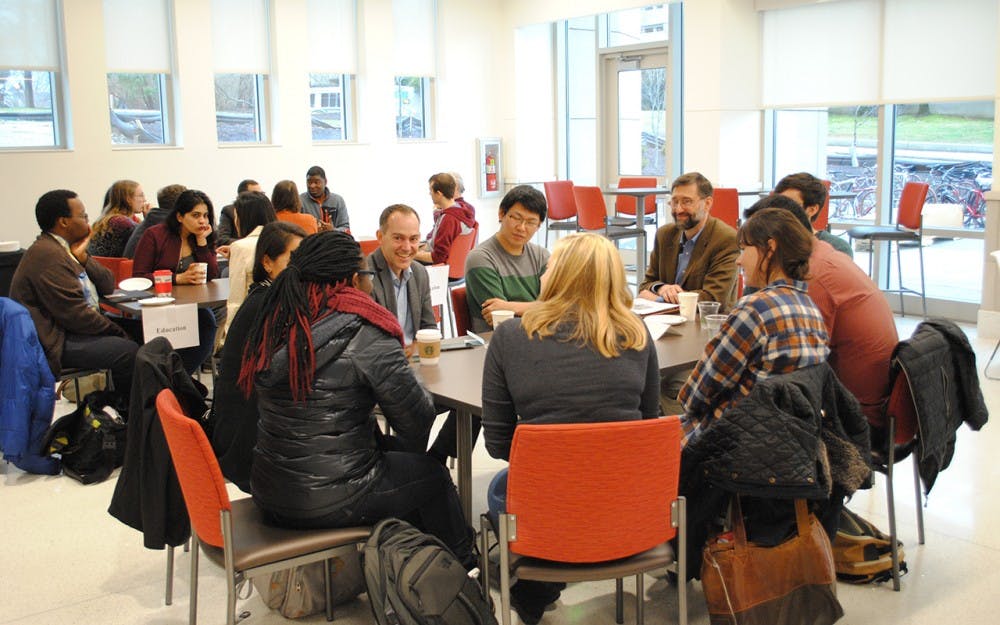Colin Kaepernick, the Dakota Access Pipeline, the immigration reform march in Indianapolis in 2006 and Black Lives Matter are just a few of the protests seen in recent years.
For some, these protests were only events in the news, but for others these protests were far more important.
Mariana Lopez-Owens, a Bloomington resident, said she still remembers when she participated in the protest march in Indianapolis in 2006 to advocate for immigration reform. Lopez-Owens and her mother were undocumented immigrants at the time, and she said she still remembers her anxiety.
“We were undocumented,” she said. “We could have been arrested.”
Lopez-Owens said the power of protest and community organizing resides with the people.
“You need to engage the people,” Lopez-Owens said.
Paul Helmke, another professor in the School of Public and Environmental Affairs, joined Lopez-Owens at a SPEA event, Power of Protest, on Thursday. Helmke related his own experience with protesting and organizing. Helmke said he has been part of numerous protests and even shook Martin Luther King Jr.‘s hand when he came to Fort Wayne, Indiana.
“I was 14 years old,” Helmke said. “It was very inspiring. I thought, ‘I can try to do something, too.’”
SPEA put together the event which brought these people together on Thursday. Power of Protest was designed to help draw people like Lopez-Owens and Helmke out and to encourage people to volunteer to affect the world like King did. Helmke went on to graduate IU and was the student body president in 1969-1970. He said he went on to lead protests when IU hiked tuition, and IU students even marched on the statehouse in those years.
Brad Fulton, an assistant professor in SPEA, agreed and said when people come together with clearly articulated goals, a successful protest and movement is possible.
“The power of community organizing is not with money but with people,” Fulton said.
Yuan “Daniel” Cheng, a SPEA student, said community organizing with people was something the Communist Party in his home country of China did very well when coming into power, but now it is different.
“Later they became experts on stamping out community organizing,” Cheng said.
While there is still grassroots organizing and protests of issues like environmental affairs in China, there is little political protest unlike the United States, Cheng said.
Fulton teaches about community organizing through history and said the issue is always about empowering those gathering together. Community organizing and protesting are an empowering mechanism for those without power, Fulton said. He explained those with power already control the levers of society and do not need to protest.
Helmke also said protesting is not just about goals and people but about a willingness to sacrifice for what protestors believe in, especially in light of a polarizing election.
“You have to be willing to give up something,” Helmke said. “The challenge will be what happens when Trump comes in.”
Helmke said protests have often been controversial and unwanted by those in power. He referenced King’s March on Washington and his “I have a dream” speech as key examples of pushing on the part of protesters.
“Back then it was controversial,” Helmke said. “The powers that be don’t like being pushed, and pushing is a part of protest.”
Helmke drew on historic examples like King’s protests — both the march from Selma, Alabama, and the bus boycott in Montgomery, Alabama — to put the protests of the past years and decade in perspective.
“I think this could be a new age of activism,” Helmke said. “With the new president and new administration this is going to be an interesting time.”






